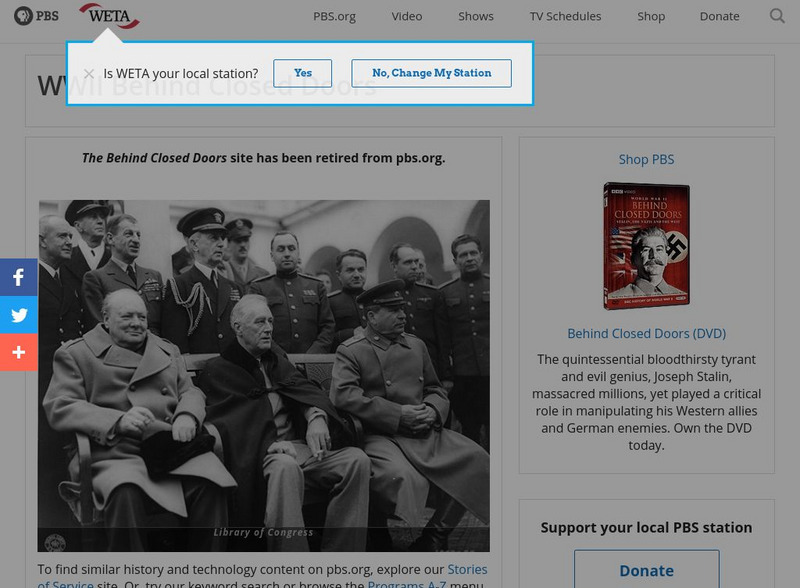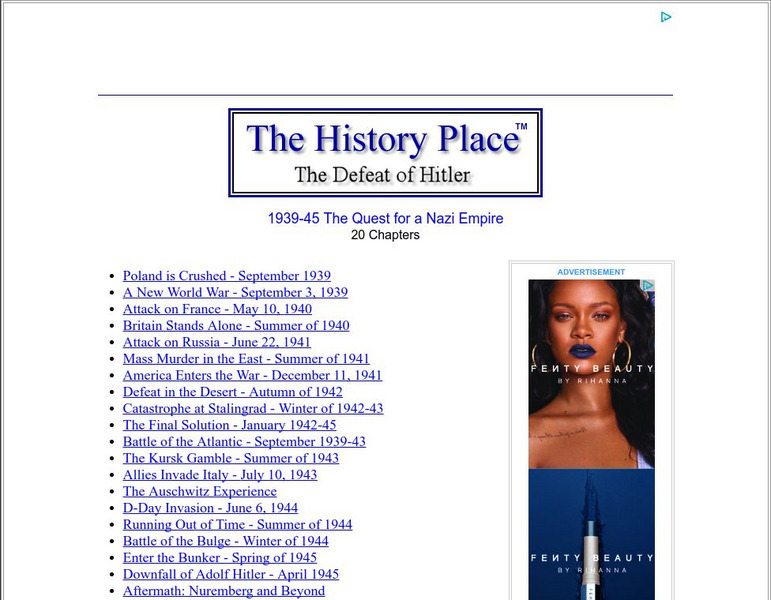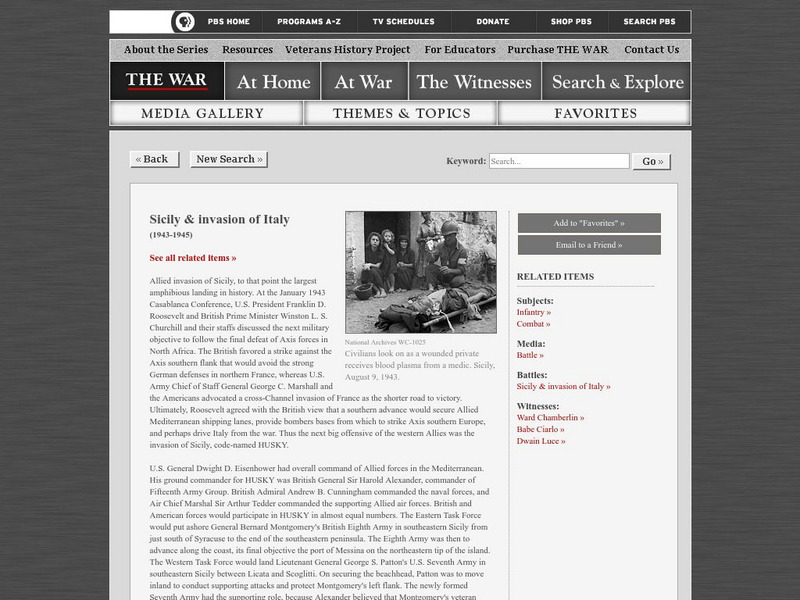BBC
Bbc History: British Bombing Strategy in World War Two
Read about the bombing strategy of the RAF during World War II, but primarily at the end of the war and the bombing of Dresden.
National Endowment for the Humanities
Neh: Edsit Ement: The u.s. In Ww Ii: The Proper Application of Overwhelming Force
In this Curriculum Unit, students will consider "The United States in World War II:"The Proper Application of Overwhelming Force"" in 4 Lessons. The unit also includes worksheets and other student materials that can be found under the...
ibiblio
Ibiblio: World War Ii Wartime Alliance
History article describes the fragile relationship between the Soviet Union and the Allies during World War II.
Other
Korean War Commemoration: Douglas Mac Arthur
This biography covers the life of Douglas MacArthur. It explores his military career from his attendance at West Point in 1899 through his military successes in World War II to his being relieved of his command in Korea.
US Army Center
U.s. Army Center of Military History: The Centennial: Omar Nelson Bradley
This lengthy biography of General Omar Bradley was written on the centennial of his birth. It traces his life as a military man through World War I, World War II, and Chairman of the Joint Chiefs of Staff. Included is a map that shows...
Other
The World at War: Axis Offensive 1941
The involvement of Great Britain was an important part of the allied attempts to defeat the axis powers. This site provides a timeline of events in World War II, and gives a good general idea of Britain's role in the events of war.
PBS
Pbs: The War: Firebombing and Allied Air Attacks on Germany and Japan
At the online companion site of the PBS documentary series "THE WAR," find a write-up about WWII Allied air attacks on Germany and Japan. With links to related resources, including archive photos and series video.
PBS
Pbs: Wwii Behind Closed Doors:the Conferences
This site provides a comprehensive overview of many conferences between Franklin D. Roosevelt and Winston Churchill and the Allies' conferences with Stalin and others during World War II and includes links to related resources and media.
Teaching American History
Teaching American History: Documents on the Grand Alliance
A collection of transcripts from meetings between the United States, the Soviet Union, and Great Britain during World War II in their efforts to defeat Germany and Japan.
The History Place
The History Place: The Defeat of Hitler: 1939 1945: Quest for a Nazi Empire
A 20-chapter book on the history of Nazi Germany over the course of the Second World War.
US Holocaust Memorial Museum
U.s. Holocaust Memorial Museum: Death Marches
A description of the forced marches the Nazis used to try to keep concentration camp victims out of the hands of the Allies in the last few months of World War II.
Veterans Affairs Canada
Veterans Affairs Canada: D Day
Examines with clarity and conciseness the role Canadian soldiers played in D-Day.
PBS
Pbs: The War: Sicily and the Invasion of Italy
At the online companion site of the PBS documentary series "THE WAR," find a write-up about Allied invasion of Sicily, which to that point was the largest amphibious landing in history. With links to related resources, including archive...
A&E Television
History.com: After Wwii, Survivors of Nazi Horrors Found Community in Displaced Persons Camps
Though the legacy of World War II Nazi death camps looms over Europe, a lesser-known camp network arose after the war with a diametrically opposed vision: to give traumatized populations a new lease on life. Established by the victorious...
The History Place
The History Place: The Defeat of Hitler: Defeat in the Desert
Describes the battles and military maneuvers of the Allies and the Germans in North Africa during World War II, resulting in the Germans' loss of North Africa.
University of Virginia
Miller Center at Uva: u.s. Presidents: Fdr: Fireside Chat 27: On the Tehran and Cairo Conferences
After Franklin Roosevelt's meeting with other Allied leaders in Tehran and Cairo in December, 1943, he gave a fireside chat on December 24 to inform the American public what transpired and how the Allies planned on ending the war.












